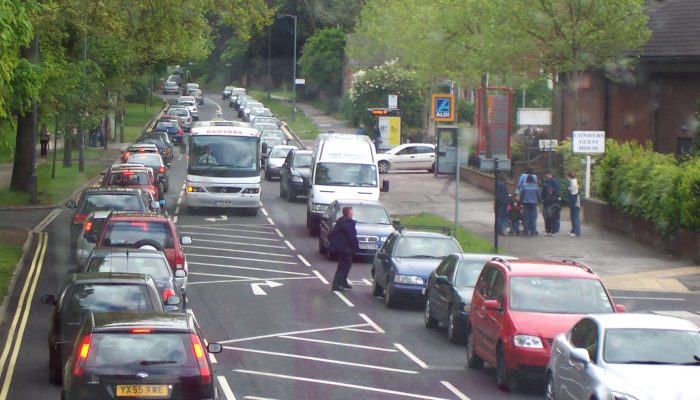
Guest Post by Robert Jack. Managing Editor and Publisher of Passenger Transport
We will soon hear Chris Grayling’s answer to this question. The Secretary of State for Transport will shortly reveal details of a new competition for local authorities to “get local transport networks moving again”, launched by Chancellor Philip Hammond in last week’s Budget.
There are lots of questions. For example, over what timeframe will the money be spent, and what kind of initiatives will they be looking for? We must assume that local authorities will be invited to come forward with projects that encourage modal shift away from the private car towards public transport and active travel. New or enhanced roads will double down on urban congestion, not fix it.
Hammond appears to have seen the light. In 2010, when he was appointed Secretary of State for Transport, he immediately declared that the “war on the motorist” was over. But now, seven years on, he is concerned that urban traffic congestion is one of the reasons why the UK is failing to close the productivity gap with other major economies.
“The stats are well known,” Hammond told Parliament. “We are 35% behind Germany and 18% behind the G7 average.”
Greener Journeys estimates that congestion is costing the UK economy more than £13bn each year, so Hammond’s £690m investment could have a huge payback.
Norman Baker worked under Hammond at the Department for Transport, serving three years as a Lib Dem junior minister. He is now Chair of Bus Users and he knows where he would spend the money.
“The most effective way to tackle congestion is to get people out of their cars and on to buses,” he said last week. “This can only be done by investing in services, adopting priority measures for buses in town and city centres, and subsidising bus travel, particularly for young people.”
Research by Greener Journeys backs up the case for investing in buses. It has found that investment in bus priority measures and bus infrastructure can ease congestion and reduce roadside emissions, delivering £7 of economic benefit for every £1 invested.
Perhaps “Spreadsheet Phil” will take a look at this data and embrace the case for modal shift. He doesn’t need to declare war on the motorist, but if he really wants to get local transport networks moving again he must fall in love with public transport – especially buses.
Could we learn something from the United States? Many people are currently questioning the wisdom of US voters, but urban dwellers are wising up to the impact of congestion. In the latest edition of Passenger Transport, Jonathan Bray of the Urban Transport Group points out that a whole series of pro-public transport plebiscites were won by thumping majorities on the same day that Donald Trump was elected as the 45th.
For example, citizens of Los Angeles, famous for its web of super-wide freeways, voted 71% in favour of ‘Measure M’ – a sales tax increase that will fund a major expansion of the county’s public transport system. And, interestingly, the $860m that will be raised for LA annually, for decades, exceeds the £690m ($839m) set aside by Hammond for his England-wide congestion-busting competition last week.
About the Author
This post was written by Robert Jack. Robert is Managing Editor and Publisher of Passenger Transport. He has worked as a journalist, editor and publisher in the passenger transport sector for 18 years. He has played a key role in many transport-related conferences and events.
